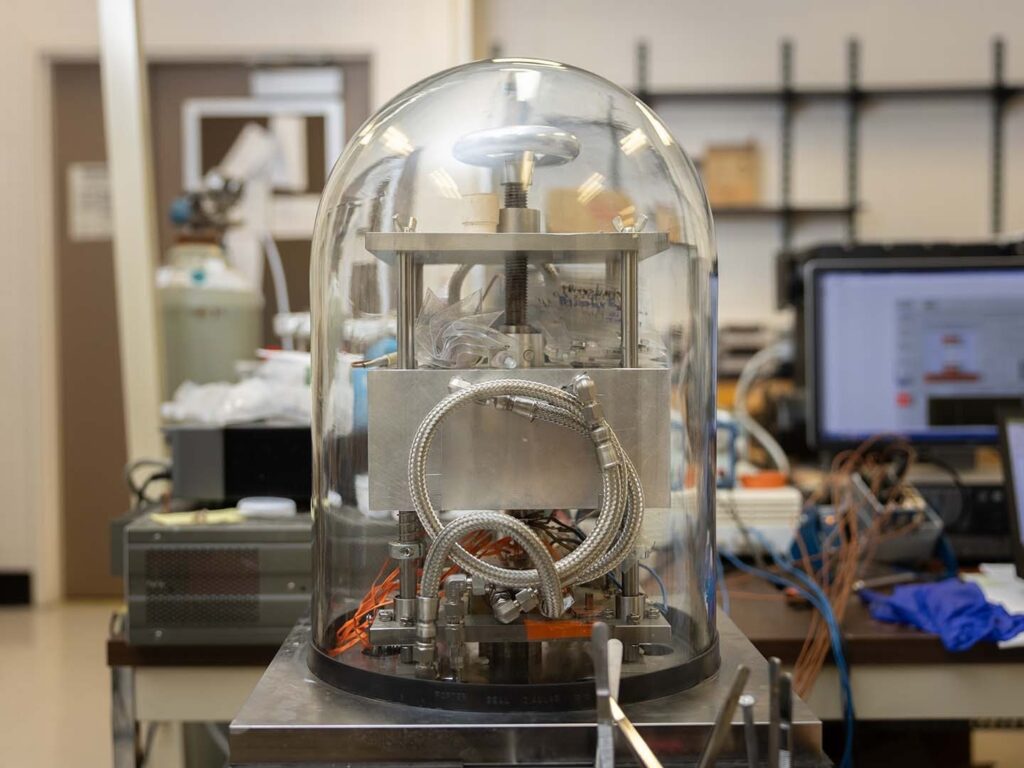**Today’s Current Affairs:** Researchers from the University of Houston and Rice University have made a breakthrough in predicting band convergence in materials, leading to a significant increase in thermoelectric performance. Their innovative design using p-type Zintl compounds has resulted in a remarkable heat-to-electricity conversion efficiency exceeding 10%. This development holds promise for the clean energy transition, as thermoelectric materials can harness wasted heat without emitting greenhouse gases. The study, published in Science, showcases a novel approach to enhancing thermoelectric materials and paves the way for more efficient energy generation systems.
1. What was the focus of the recent study published in Science?
- a. Predicting weather patterns in different regions
- b. Designing materials for high-performance thermoelectricity
- c. Studying marine biology in the Gulf of Mexico
- d. Analyzing the effects of deforestation on biodiversity
Answer: b. Designing materials for high-performance thermoelectricity
2. Who is the corresponding author of the study?
- a. Zhifeng Ren
- b. Lexie Corner
- c. Xin Shi
- d. Shaowei Song
Answer: a. Zhifeng Ren
3. What is band convergence’s role in enhancing thermoelectric materials?
- a. It decreases the efficiency of thermoelectric modules
- b. It has no impact on thermoelectric performance
- c. It raises the thermoelectric power factor
- d. It reduces the need for experimental testing
Answer: c. It raises the thermoelectric power factor
4. How did researchers determine which combinations of compounds could achieve band convergence?
- a. By conducting experiments on various mixtures
- b. By trial and error method
- c. By using a computation method
- d. By guessing randomly
Answer: c. By using a computation method
What did researchers from the University of Houston and Rice University discover in their recent study?
Researchers found ways to predict band convergence in different materials and designed materials using p-type Zintl compound to increase thermoelectric performance, resulting in heat-to-electricity conversion efficiency exceeding 10%.
Why are thermoelectric materials important in the clean energy transition?
Thermoelectric materials can generate power from heat sources that would otherwise go to waste without producing additional greenhouse emissions or requiring substantial upfront investment, making them crucial for the clean energy transition.
What did the researchers achieve in terms of heat-to-electricity conversion efficiency in their study?
At a temperature differential of 475 K, or around 855 ºF, the heat-to-electricity conversion efficiency exceeded 10%.
What is band convergence, and why is it significant in enhancing thermoelectric materials?
Band convergence is a strategy to raise the thermoelectric power factor, which is correlated with the thermoelectric module’s actual output power. It is believed to be a useful strategy for enhancing thermoelectric materials by increasing the similarity between all band members so that they can share the burden of carrying the weight effectively.
How did researchers conduct the study to achieve band convergence in thermoelectric materials?
Researchers employed a high-entropy Zintl alloy as a case study, creating a series of compositions through which band convergence was concurrently achieved in all compositions. They used a computation method to establish parent compound ratios for the finished alloy, allowing them to design and test materials more efficiently.
Today's current affairs bring exciting news from the University of Houston and Rice University. Researchers have found ways to predict band convergence in materials and have designed p-type Zintl compound materials to increase thermoelectric performance, achieving an impressive heat-to-electricity conversion efficiency exceeding 10%. This breakthrough could play a vital role in the clean energy transition, allowing for the generation of power from heat sources that would otherwise go to waste. The study's corresponding author, Zhifeng Ren, highlighted the importance of electronic band convergence in enhancing thermoelectric performance. By strategically designing materials with band convergence, researchers have unlocked the potential for high-performance thermoelectric power generation. This innovative approach could pave the way for the development of new and efficient thermoelectric materials, offering a promising solution for clean energy production.






